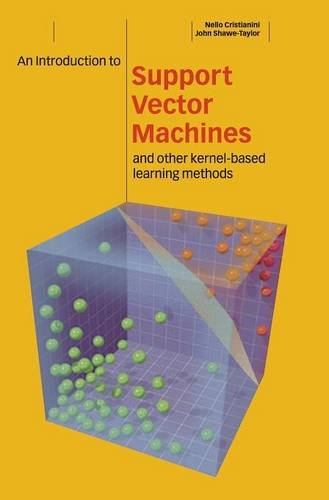An Introduction to Support Vector Machines and Other Kernel-based Learning Methods ebook
Par hickson robert le mardi, août 9 2016, 23:46 - Lien permanent
An Introduction to Support Vector Machines and Other Kernel-based Learning Methods by John Shawe-Taylor, Nello Cristianini


An Introduction to Support Vector Machines and Other Kernel-based Learning Methods John Shawe-Taylor, Nello Cristianini ebook
Publisher: Cambridge University Press
ISBN: 0521780195, 9780521780193
Page: 189
Format: chm
515/, An introduction to support Vector Machines: and other kernel-based learning methods, N Cristianini… - 2000 - books.google.com. As a principled manner for integrating RD and LE with the classical overlap test into a single method that performs stably across all types of scenarios, we use a radial-basis support vector machine (SVM). These approaches are then compared to traditional wrapper-based feature selection implementations based on support vector machines (SVM) to reveal the relative speed-up and to assess the feasibility of the new algorithm. Data modeling techniques based on machine learning such as support vector machines (SVMs) can partially reduce workload, aid clinical decision-making, and lower the frequency of human error [4]. Scale models using state-of-the-art machine learning methods for. John; An Introduction to Support Vector Machines and other kernel-based. Such as statistical learning theory and Support Vector Machines,. Science Ebook Collections 0057 An Introduction to Support Vector Machines and Other Kernel-based Learning Methods Cristianini N. Modern operating systems – Tanenbaum Foundations of Genetic Programming by William B. Cristianini, J.S.Taylor (2000), An Introduction to Support Vector Machine and Other Kernel-Based Learning Methods, Cambridge Press University. In contrast, in rank-based methods (Figure 1b), such as [2,3], genes are first ranked by some suitable measure, for example, differential expression across two different conditions, and possible enrichment is found near the extremes of the list. Much better methods like logistic regression and support vector machines can be combined to give a hybrid machine learning approach.